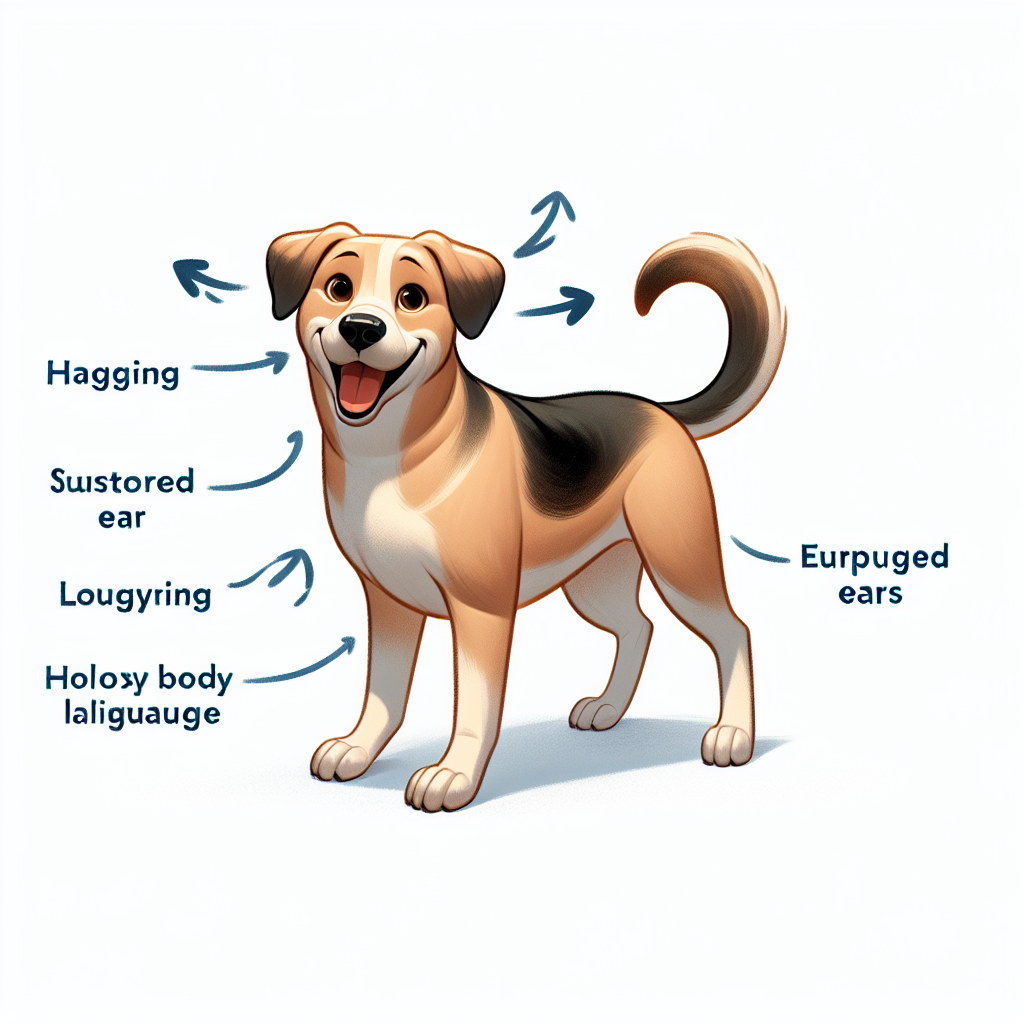Introduction to Flea Infestations

Oh boy, fleas! Just saying the word makes me itch. If you’ve ever dealt with a flea problem at home, you know it’s no walk in the park. These pesky little critters can make life miserable for both you and your furry friends. Understanding the flea problem is the first step in reclaiming your home. Fleas are tiny, but they can cause a big headache. They love warm-blooded hosts, which makes your pets and, unfortunately, you a perfect target.
Why do fleas love your home so much? Well, your cozy abode offers the perfect environment—warmth, shelter, and a never-ending buffet if you’ve got pets. They sneak in, multiply faster than you can say “flea infestation,” and before you know it, you’re scratching your head wondering how it all started.
Common Signs of Fleas in Your House
How do you know if you’ve got a flea-infested home? Well, there are a few telltale signs of flea infestation. If your pet is scratching more than usual, it’s time to investigate. Flea bites can cause severe itching and even lead to skin infections if left untreated. Check for flea dirt—those little black specks that look like pepper on your pet’s skin. It’s actually flea poop, and it’s a sure sign you’ve got a problem.
Understanding the flea lifecycle stages can help you tackle the issue more effectively. Fleas go through four stages: egg, larva, pupa, and adult. This cycle can make getting rid of them tricky, as different stages require different treatments. Each stage impacts your home differently, making it crucial to know what you’re dealing with.
How Fleas Enter Your Home
So, how do these unwelcome guests make their way into your home? Pets as flea carriers are the most common culprits. Your dog or cat may pick up fleas from the yard, the park, or even from another animal. Once they’re on your pet, they’re hitching a ride straight into your living room.
But don’t just blame Fido! Fleas can also find other unlikely entrances into your home. They can hitch a ride on your shoes or even your clothes. I once had a friend who unknowingly brought fleas home from a weekend camping trip. It only takes a few fleas to start a whole new colony in your house.
Immediate Actions to Take Once You Spot Fleas
Spotted a flea? Don’t panic. Immediate flea control steps are crucial in stopping these pests before they overrun your home. First, grab a flea comb and start checking your pet thoroughly. It’s a simple but effective tool to remove fleas and flea dirt. Trust me, I’ve spent many evenings with a comb in one hand and a treat in the other, trying to calm a squirming pup.
Next, stock up on tools and products to have on hand. You’ll want a good vacuum cleaner, pet-safe flea sprays, and perhaps some diatomaceous earth for those hard-to-reach places. These initial steps to control the infestation can save you a lot of trouble later on. And remember, consistency is key. You’ll need to vacuum frequently and wash your pet’s bedding in hot water to get rid of those pesky eggs and larvae.
The Importance of Pet Treatment in Managing Fleas
Now, let’s talk about the real heroes of this story—vet flea medications. These are a game-changer in managing a flea problem. Vet-recommended flea medications are typically safe, effective, and can provide relief for your pet in a matter of hours. They come in various forms, like topical treatments and oral medications. Consult your vet to find the right one for your pet’s needs.
Regular grooming and bathing also play a huge role in flea prevention. Make it a habit to groom your pets regularly. Not only does it help with flea control, but it’s also a great bonding time with your furry friend. During bath time, use a flea shampoo to kill any fleas on contact. Just be sure not to overdo it, as too much bathing can dry out your pet’s skin.
Dealing with fleas is no fun, but with the right approach, you can protect your home and your pets. Thanks for sticking with me through this flea tale. I hope this helps you tackle the flea problem in your home. Remember, you’re not alone in this battle, and with a little persistence, you’ll be back to a flea-free life in no time. Happy flea fighting!
Understanding the Lifecycle of Fleas: Why Timing Your Treatment Matters
Hey there, folks! It’s Anna, your go-to gal for all things dog-related. Today, we’re diving into Part 2 of our flea treatment saga. If you’re like me and have been in the pet game for a while, you know these pesky critters don’t take a holiday. First up, understanding the lifecycle of fleas is key. Timing is everything, folks. Knowing when these critters are at their worst can save you a lot of hassle down the line. Ever tried to kill a flea, only to find the eggs hatching a week later? Yeah, not fun.
Fleas have four stages of life: egg, larva, pupa, and adult. Missing just one stage in your treatment plan can mean a whole new batch of fleas hatching in your home. I once thought I’d conquered the flea battle, only to have the little buggers reappear like they owned the place. Each stage needs a specific approach, and understanding this helps in timing your flea treatment for the house effectively. The best flea treatment for home is more about planning than anything else—knowing when to strike keeps the cycle from continuing.
The Role of Natural and Homemade Remedies: Are They Effective?
Now, I’ve heard about all sorts of natural remedies—lavender oil, vinegar, rosemary oil. But do they work? Spoiler alert: It’s hit or miss. Some folks swear by them, but I’ve seen some end up with bigger infestations. So, let’s dig into whether these home remedies are worth your time. When it comes to homemade flea remedies for dogs, effectiveness varies. Some people swear that their concoction of essential oils does wonders, while others find their homes overrun despite their efforts.
Years back, I tried a vinegar mix on my dogs. It seemed to work at first, but soon enough, the fleas were back, and they brought friends. The natural flea treatment effectiveness often depends on the severity of the infestation and how consistent you are with applying these remedies. While natural sounds appealing, it can sometimes lead to more fleas if not done right. So, if you’re thinking of going the natural route, weigh the pros and cons carefully. You don’t want to end up with a flea circus in your living room.
How to Choose the Right Flea Treatment for Your Home and Pet
Choosing the right flea treatment can feel like picking a needle out of a haystack. With so many options, it’s easy to get overwhelmed. But don’t worry! We’ll break it down so you can find the right fit for your furry friend and your home. The best flea treatment for home and pets is the one that works for your lifestyle and your pet’s needs. Some treatments are topical, others are oral, and they all have their strengths.
When I first started treating my pets, I went with the cheapest option. Big mistake. My dog had a bad reaction, and I ended up spending more at the vet than I saved on the treatment. Lesson learned: do your research and maybe spend a little more for a product that’s right for your pet. The key is finding effective flea control methods that suit your household. Ask your vet, look up reviews, and find what aligns with your budget and needs.
Preventative Measures: Keeping Fleas at Bay Year-Round
Prevention is the name of the game, my friends. Fleas don’t care if it’s winter or summer; they’re relentless. Keeping them at bay year-round is the best way to keep your sanity intact. Trust me, a little prevention goes a long way. Year-round flea prevention for pets isn’t just smart; it’s necessary. Fleas can be sneaky, waiting for the perfect opportunity to invade.
I used to think winter was my flea-free season. Nope. Fleas can survive indoors just fine, thank you very much. Regular treatments, keeping the home clean, and maintaining your pet’s health are crucial. A flea-free home tips the scales in your favor, keeping your environment pleasant and your pets comfortable. Remember, the battle is ongoing, but with consistent preventative measures, you can keep those fleas at bay.
Sharing Your Home with Pets: Maintaining a Flea-Free Environment
Finally, sharing your space with pets doesn’t have to mean sharing it with fleas. Keeping a clean and flea-free home is doable and rewarding. Stick with me, and I’ll show you how. Maintaining a flea-free environment requires a mix of vigilance and action. Regular vacuuming, washing pet bedding, and using flea combs can make a big difference.
I used to dread cleaning days, but once I realized how much it helped keep fleas away, it became a regular routine. The best flea treatment for house isn’t just about products; it’s about habits. Effective flea control methods are part of a lifestyle. Keep your home tidy, bathe your pets regularly, and stay on top of treatments. You’ll find that a little effort goes a long way in keeping your home flea-free.
Thanks for sticking around! Remember, you’ve got this, and your pets are lucky to have someone as dedicated as you. Stay tuned for Part 3, and take care!
Practical Tips for Flea Prevention in the Home
Hey, it’s Anna. After two decades in the pet industry, if there’s one thing I know, it’s that keeping your home flea-free is crucial. Now, I know you’re probably thinking, “Fleas? Again?” But trust me, it’s better to be proactive than reactive. You don’t want these tiny pests setting up shop in your home. So, let’s dive into some practical flea prevention tips for home that are simple yet effective.
First things first, vacuuming. I can’t stress this enough. Regular vacuuming is like your secret weapon against fleas. It not only picks up adult fleas but also those sneaky eggs and larvae hiding in carpets and crevices. And don’t forget to empty the vacuum bag outside immediately—no point in letting them crawl back in. Next, wash your pet’s bedding frequently. You’d be amazed at how many fleas and eggs can accumulate in those cozy spots. A hot wash cycle and a thorough dry can do wonders.
Another tip? Consider using diatomaceous earth around your home. It’s a natural powder that dehydrates and kills fleas on contact. Just sprinkle it in areas where your pet likes to hang out. It’s safe and non-toxic, but be sure to use the food-grade version. These small actions can make a big difference in maintaining a flea-free home.
Financial Considerations: Balancing Cost and Effectiveness
When it comes to flea treatments, money can feel like it’s flying out the window. But here’s the thing: you don’t need to break the bank to keep fleas at bay. I’ve learned over the years that cost-effective flea treatments do exist, and they can be just as effective as the pricier options.
One affordable method is to use flea collars. They’ve come a long way and can be a great budget-friendly option. But always check the ingredients to ensure they’re safe for your pet. Another tip? Look for store-brand flea shampoos. They’re usually cheaper and work just as well as the name brands. Sometimes, the simplest solutions can be the most effective.
I remember the days when I’d spend a fortune on all sorts of flea products, only to realize that a balanced approach was key. Don’t forget to explore flea treatments that offer combined protection against other parasites—these can often save you money in the long run by preventing multiple issues at once. Being savvy about your choices can help you find that sweet spot between cost and effectiveness.
Personal Stories: Real-Life Experiences and Lessons Learned
Let me tell you, I’ve had my fair share of flea woes. One summer, my dog, Max, had what seemed like a never-ending case of fleas. I tried everything under the sun. I felt like I was in a constant battle, trying different products and methods. But it wasn’t until I started sharing personal flea control stories with other pet owners that I found the best solutions.
There was this one time I chatted with a fellow pet parent at the park. She mentioned using a simple flea comb regularly, and how it helped her cat stay flea-free. I gave it a shot with Max, and it was a game-changer. That little comb picked up the fleas I couldn’t even see. It was a reminder that sometimes, old-school methods work wonders.
Then there was the time I learned about the power of essential oils. A friend suggested a mix of lavender and cedarwood oil as a natural deterrent. I was skeptical, but it turned out to be quite effective. Sharing real-life flea treatment experiences taught me that everyone’s journey is different, but we can learn so much from each other.
Embracing a Holistic Approach to Flea Control
Here’s something I’ve come to appreciate: a holistic approach to flea control. It’s not just about dousing your pet with chemicals; it’s about creating an environment where fleas are unwelcome. This means thinking about everything—from diet to natural deterrents.
Diet plays a surprisingly big role. A healthy pet is less attractive to fleas. Consider adding a little brewer’s yeast to their food. It’s said to repel fleas naturally. And speaking of natural methods, have you ever tried using lemon spray? It’s simple. Boil a cut lemon in water, let it steep overnight, and then spray it on your pet’s fur. It’s a great natural flea repellent.
And don’t forget about your yard. Keeping your lawn trimmed and free of debris can reduce flea habitats. Think of it as creating a balanced environment where fleas just aren’t welcome. This holistic approach isn’t just good for your pet; it’s good for your peace of mind too.
Encouragement and Final Thoughts: You’ve Got This!
Look, flea control can feel overwhelming. I get it. But remember, you’re doing your best, and that counts for a lot. Fleas may be tiny, but you’ve got a big heart and a lot of love for your pet. Keep up the great work, and don’t be afraid to try new things. Every pet is different, and finding what works for you is part of the journey.
Thank you for joining me on this flea-fighting adventure. Your pets are lucky to have someone who cares so much about their well-being. So, go on and tackle those fleas with confidence. You’ve got this, and I’m cheering you on every step of the way!
Quick Takeaways:
Alright, folks, let’s wrap this up with some quick takeaways. Flea treatment for the house isn’t just a one-time deal. It’s a commitment to keeping your space flea-free. Understanding flea lifecycle stages is crucial. These little jumpers start as eggs, move to larvae, then pupae, and finally, adults. This cycle can make it hard to get rid of them, especially if you’re not attacking them at every stage.
If you’ve got pets, they’re often the flea carriers bringing these pests into your home. Regular grooming for flea prevention can help, but sometimes it’s not enough. You might need vet flea medications, which can be a game-changer when dealing with a flea problem home scenario.
Immediate flea control steps are essential. This includes vacuuming regularly and washing pet bedding. Homemade flea remedies for dogs can be tempting, but they’re hit-or-miss. Some folks swear by them, but others find they end up with a bigger problem. So, choose wisely.
Year-round flea prevention for pets is a must. Fleas don’t take a break, and neither should your prevention efforts. Keeping your home clean and using effective flea control methods can make a world of difference.
Remember, you’re not alone in this battle. Many have fought and won against these pesky invaders. Stick to the basics, be consistent, and you’ll keep your home a flea-free zone.
FAQs:
1.
What are the signs of flea infestation in my home?
You’ll notice your pets scratching more than usual. Check for flea dirt, which looks like tiny black specks, on their fur. You might also see small red bites on your own skin. Fleas are sneaky, so keep an eye out for these signs to catch them early.
2.
How can I prevent my pets from being flea carriers?
Regular grooming for flea prevention is key. Use a flea comb and give them baths with flea shampoo. Keep up with vet flea medications, which can prevent fleas before they become a problem. This will help reduce the chance of your pets bringing fleas into your home.
3.
Are natural flea treatments effective for flea treatment for the house?
Natural flea treatment effectiveness can vary. Some swear by essential oils or vinegar, but they don’t always work for everyone. While they might repel some fleas, they’re not foolproof. If you’re dealing with a significant infestation, you might need stronger, vet-recommended treatments.
4.
What are some immediate flea control steps I can take?
Start by vacuuming your home regularly, especially where your pets sleep. Wash pet bedding in hot water and dry it on high heat. Use flea sprays or powders in areas your pets frequent. These steps can help control the flea population in your home.
5.
How can I ensure year-round flea prevention for my pets and home?
Consistency is key. Use monthly flea prevention treatments recommended by your vet. Keep your home clean, and regularly check your pets for signs of fleas. By staying on top of prevention, you can maintain a flea-free home all year long.
Conclusion:
Alright, folks, we’ve covered a lot of ground on flea treatment for your house. Fleas are relentless, but so are we. Understanding the flea lifecycle stages and being proactive with preventative measures can make a significant difference. Remember, keeping your home clean and your pets well-groomed is half the battle. Don’t shy away from using vet flea medications when needed—they can be your secret weapon.
If you ever find yourself overwhelmed, take a breath and remember you’re not alone in this. Many pet owners have faced the same challenge and come out victorious. Stay consistent with your prevention efforts, and soon enough, you’ll be kicking fleas to the curb.
Thanks for sticking with me through this journey. Your pets are lucky to have someone who cares so much. Keep up the great work, and don’t forget—you’re more than capable of maintaining a flea-free home. Here’s to a happy, healthy home for you and your furry friends!
References:
1. [How to Get Rid of Fleas – Home Depot](https://www.homedepot.com/c/ab/how-to-get-rid-of-fleas/9ba683603be9fa5395fab90219b8760)
2. [Controlling Fleas and Ticks Around Your Home – EPA](https://www.epa.gov/pets/controlling-fleas-and-ticks-around-your-home)
3. [Fleas – CDC](https://www.cdc.gov/fleas/section-name/index.html)
4. [How to Get Rid of Fleas – Terminix](https://www.terminix.com/other/fleas/how-to-get-rid-of-fleas/)
Our solution eradicates fleas on contact without harmful chemicals, ensuring a safe environment for your pets and family. Easy to use and highly effective, SayByeBugs helps you maintain a flea-free home. Learn more and order today at SayByeBugs.com
Our solution eradicates fleas on contact without harmful chemicals, ensuring a safe environment for your pets and family. Easy to use and highly effective, SayByeBugs helps you maintain a flea-free home. Learn more and order today at SayByeBugs.com








